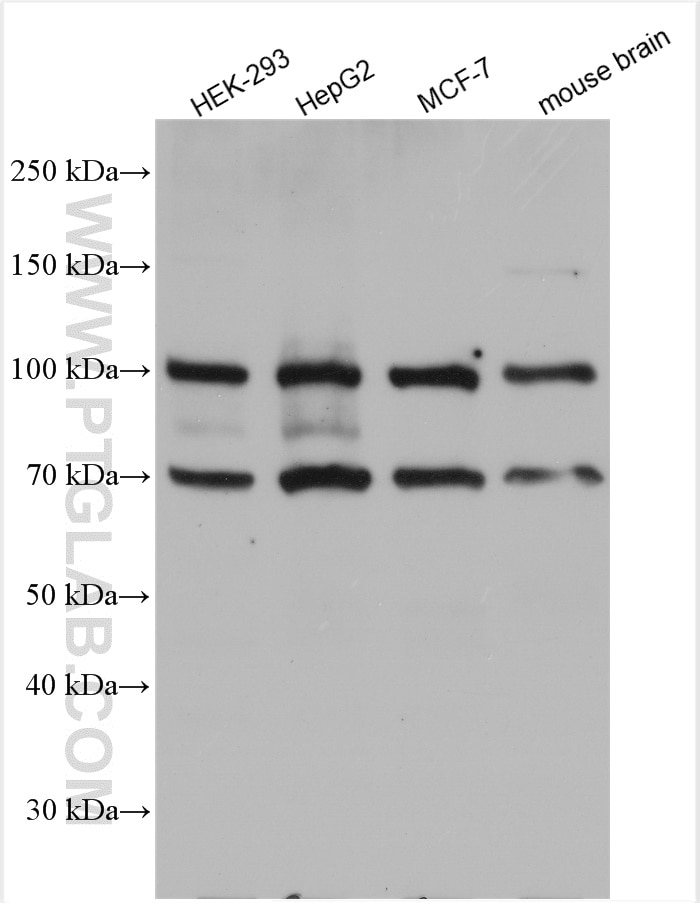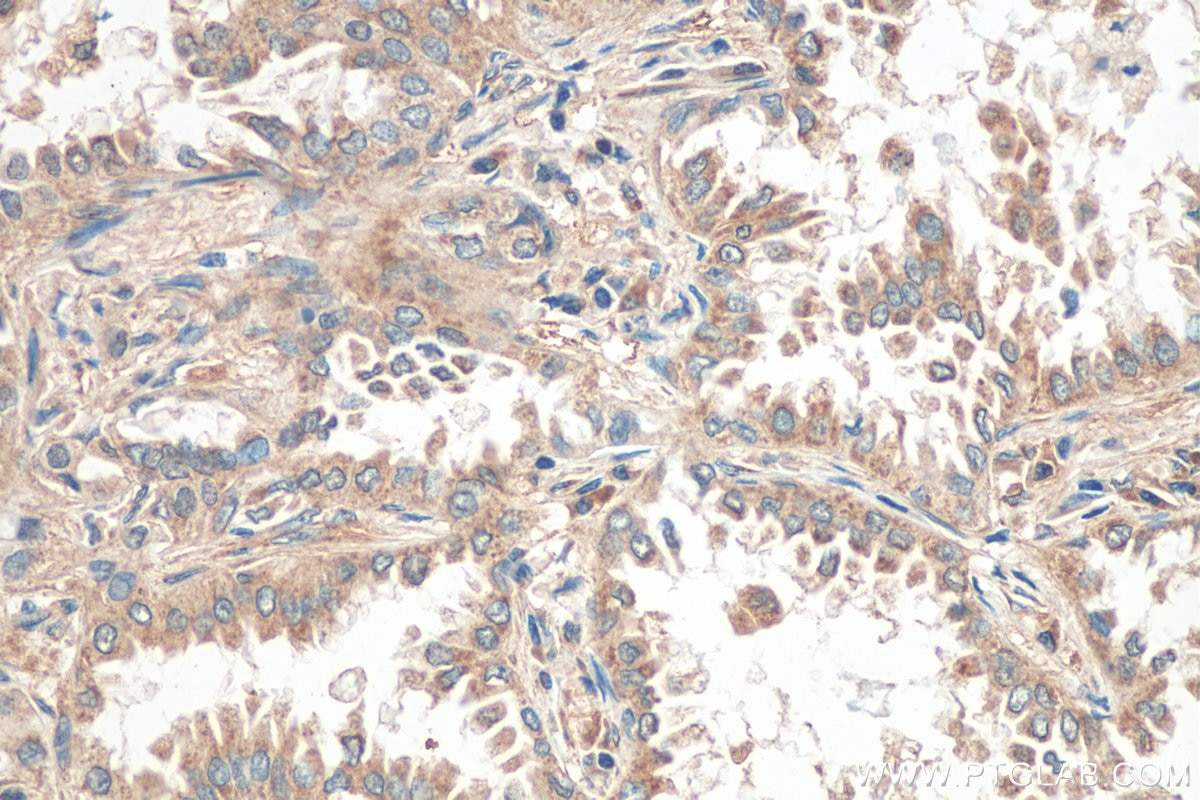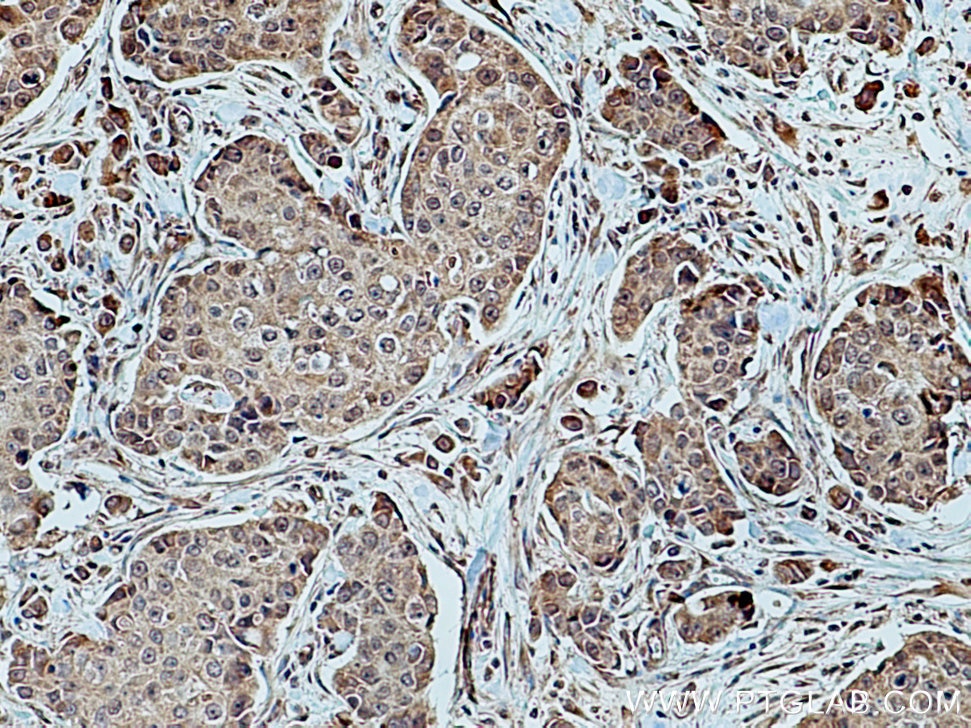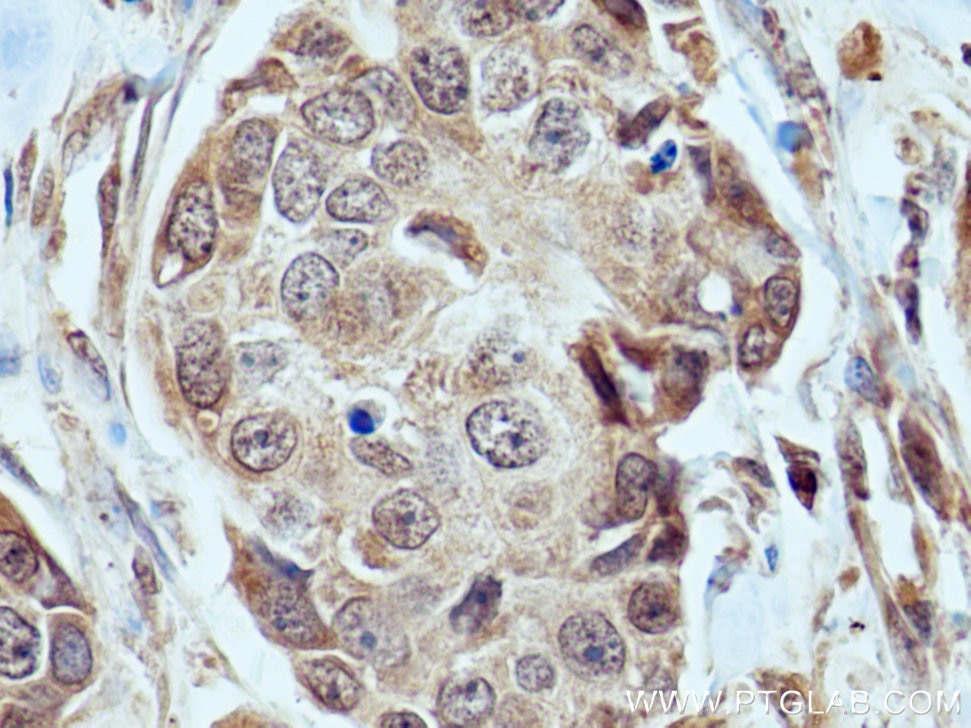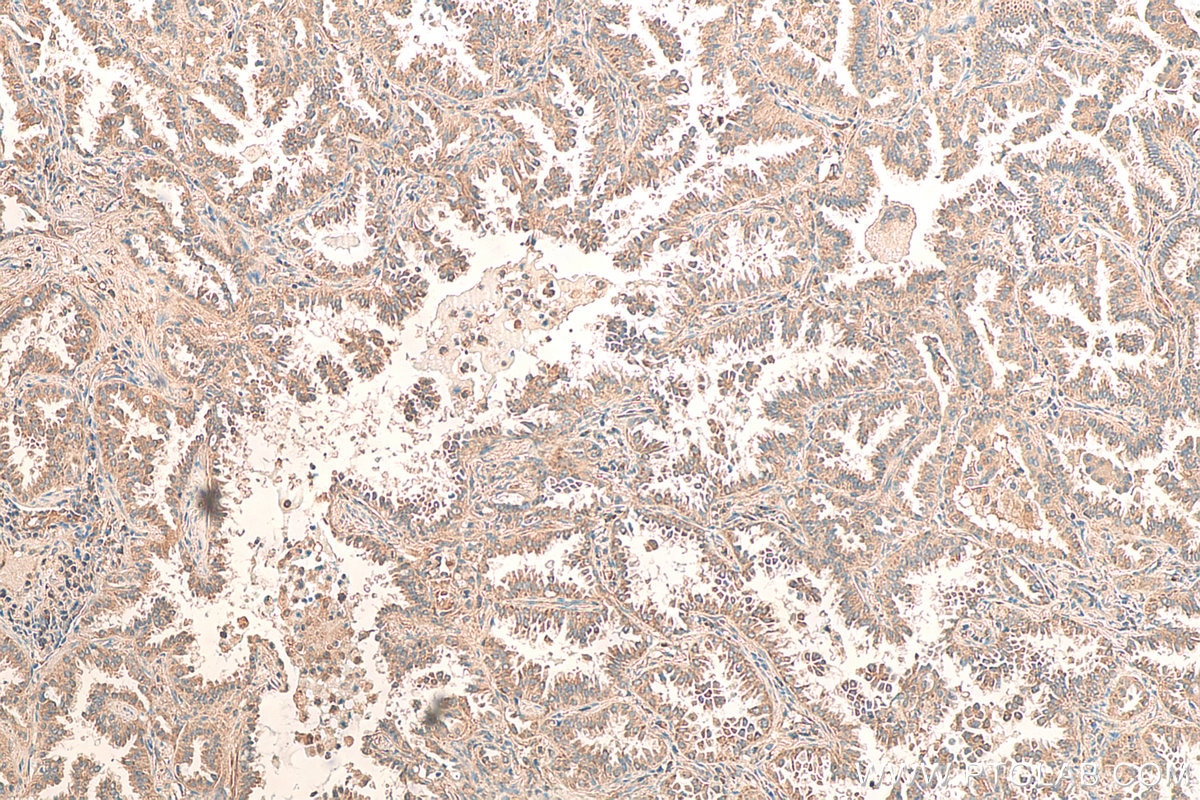- Phare
- Validé par KD/KO
Anticorps Polyclonal de lapin anti-FBXW7
FBXW7 Polyclonal Antibody for WB, IHC, ELISA
Hôte / Isotype
Lapin / IgG
Réactivité testée
Humain, souris et plus (1)
Applications
WB, IHC, IF, IP, ELISA
Conjugaison
Non conjugué
N° de cat : 28424-1-AP
Synonymes
Galerie de données de validation
Applications testées
| Résultats positifs en WB | cellules HEK-293, cellules HepG2, cellules MCF-7, tissu cérébral de souris |
| Résultats positifs en IHC | tissu de cancer du poumon humain, tissu de cancer du sein humain il est suggéré de démasquer l'antigène avec un tampon de TE buffer pH 9.0; (*) À défaut, 'le démasquage de l'antigène peut être 'effectué avec un tampon citrate pH 6,0. |
Dilution recommandée
| Application | Dilution |
|---|---|
| Western Blot (WB) | WB : 1:500-1:2000 |
| Immunohistochimie (IHC) | IHC : 1:50-1:500 |
| It is recommended that this reagent should be titrated in each testing system to obtain optimal results. | |
| Sample-dependent, check data in validation data gallery | |
Applications publiées
| KD/KO | See 10 publications below |
| WB | See 38 publications below |
| IHC | See 9 publications below |
| IF | See 5 publications below |
| IP | See 7 publications below |
Informations sur le produit
28424-1-AP cible FBXW7 dans les applications de WB, IHC, IF, IP, ELISA et montre une réactivité avec des échantillons Humain, souris
| Réactivité | Humain, souris |
| Réactivité citée | rat, Humain, souris |
| Hôte / Isotype | Lapin / IgG |
| Clonalité | Polyclonal |
| Type | Anticorps |
| Immunogène | FBXW7 Protéine recombinante Ag28471 |
| Nom complet | F-box and WD repeat domain containing 7 |
| Masse moléculaire calculée | 66 kDa |
| Poids moléculaire observé | 100-110 kDa, 66-75 kDa |
| Numéro d’acquisition GenBank | NM_001349798 |
| Symbole du gène | FBXW7 |
| Identification du gène (NCBI) | 55294 |
| Conjugaison | Non conjugué |
| Forme | Liquide |
| Méthode de purification | Purification par affinité contre l'antigène |
| Tampon de stockage | PBS with 0.02% sodium azide and 50% glycerol |
| Conditions de stockage | Stocker à -20°C. Stable pendant un an après l'expédition. L'aliquotage n'est pas nécessaire pour le stockage à -20oC Les 20ul contiennent 0,1% de BSA. |
Informations générales
FBXW7, also named as FBW7, FBX30, SEL10 and hAgo, is a substrate recognition component of a SCF (SKP1-CUL1-F-box protein) E3 ubiquitin-protein ligase complex which mediates the ubiquitination and subsequent proteasomal degradation of target proteins. It probably recognizes and binds to phosphorylated target proteins. FBXW7 is involved in the degradation of cyclin-E, MYC, NOTCH1 released notch intracellular domain (NICD), and probably PSEN1. FBXW7 is a general tumor suppressor in human cancer (PMID: 17909001). FBXW7 has 3 isoforms (α/β/γ) with the calculated molecular mass of 80 kDa, 70 kDa and 66 kDa, and apparent molecular mass of 100-110 kDa and 66-75 kDa (PMID: 31346036/PMID: 22864569). K48 autoubiquitination is consistent with maintenance of ubiquitinated FBW7 (Ub-FBW7, 200 kDa)(PMID: 32353058).
Protocole
| Product Specific Protocols | |
|---|---|
| WB protocol for FBXW7 antibody 28424-1-AP | Download protocol |
| IHC protocol for FBXW7 antibody 28424-1-AP | Download protocol |
| Standard Protocols | |
|---|---|
| Click here to view our Standard Protocols |
Publications
| Species | Application | Title |
|---|---|---|
Mol Cancer Loss of FBXW7-mediated degradation of BRAF elicits resistance to BET inhibitors in adult T cell leukemia cells. | ||
J Exp Med Somatic gain-of-function mutations in BUD13 promote oncogenesis by disrupting Fbw7 function | ||
Dev Cell Nuclear import carrier Hikeshi cooperates with HSP70 to promote murine oligodendrocyte differentiation and CNS myelination
| ||
Cancer Lett Inhibition of KIF20A enhances the immunotherapeutic effect of hepatocellular carcinoma by enhancing c-Myc ubiquitination | ||
Theranostics Histone demethylase JMJD3 protects against renal fibrosis by suppressing TGFβ and Notch signaling and preserving PTEN expression. | ||
EMBO Rep The 18S rRNA m6 A methyltransferase METTL5 promotes mouse embryonic stem cell differentiation. |
